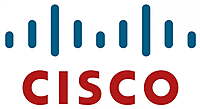Software Defined Wide Area Networking (SDWAN) is an revolutionary approach to connectivity and quickly becoming the de facto standard. SDWAN offers companies of all sizes a bulletproof connection strategy. Plus offers simplified management, quick turn-up, prioritized & optimized application performance, improved resiliency, and cost savings when compared to traditional WAN technologies, like MPLS.
Secure Access Service Edge (SASE), represents the convergence of SDWAN and a next-generation security functionality. A full SASE stack generally will consist of a next-gen firewall (NGFW), cloud access service broker (CASB), zero-trust network access (ZTNA), software web gateway (SWG), and of course, SDWAN.
Contact Cloud 9 and have a vendor-agnostic SD-WAN and SASE expert on your side!























SD-WAN and SASE
Software Defined WAN provides a bulletproof, outage-proof internet and WAN connection strategy
Secure Access Service Edge combines the best of SDWAN and unbreakable security, together in one service
SDWAN is a now "must have" not a "nice to have" and is the critical element to a bulletproof, outage-proof solution. But many businesses are still uncertain of what SDWAN actually does. Simply put, it’s an appliance that sits at your site(s) and a cloud service that work together (please note SDWAN IS NOT just a firewall appliance with multiple WAN ports!!!). SDWAN stands between your LAN and two or more internet connections. Plug it all in, and what you have is a solution that understands all the packets flowing through it and which packets need the fastest and best route (e.g. voice packets need the best route, not necessarily the fastest). SDWAN makes a decision on which ISP to use in real-time using the Mean Opinion Score (MOS) and other information on each connection. MOS is the de facto standard measurement(s) for bandwidth integrity and is the accumulated score of latency, jitter, delay, packet loss etc. If MOS is poor on one of the connections, the SDWAN seamlessly moves traffic over to the next best connection which is used until the traffic jam clears up. Most real SDWAN solutions will constantly and continuously use all of the connections when MOS is high and even aggregate the multiple connections into one larger connection. So instead of your firewall or router thinking you have two 100Mbps connections, a real SDWAN solution will actually give you one 200Mbps connection! All of this is done moment by moment, packet by packet, in real-time. This type of "traffic-management" is especially useful in many of today's sensitive applications such as VoIP, video, critical cloud services, and hypersensitive VPN connections. Businesses with multiple locations and SDWAN at each one get a built-in, site-to-site private network, eliminating the need for expensive MPLS and Point-to-Point connections.

Important questions when considering SDWAN:
How important is constant uptime to your business?
Do you have a failover/backup connection currently?
Do you have the right bandwidth to support your current/future cloud applications? (More doesn't always mean better. With SDWAN you'll get better bandwidth)
What are your business-critical applications?
Where do your applications live today?
Do all of your applications perform consistently and reliably?
What applications are limited due to your current WAN constraints?
What happens to your business when the Internet goes down?
What is the cost of downtime?

The Old Way

The New Way
Get fiber performance with SD-WAN and never go down again!

Contact Cloud 9 and have a vendor-neutral expert help identify the best SD-WAN provider for you.

